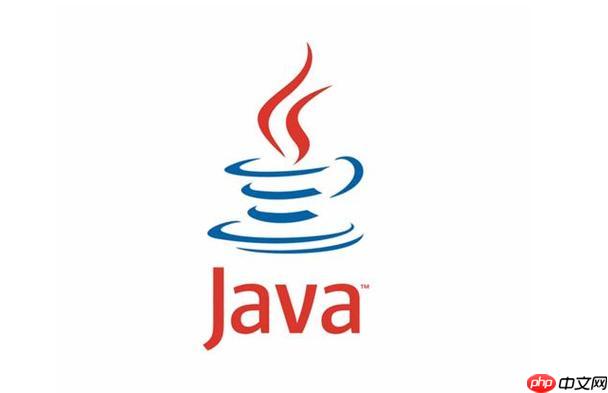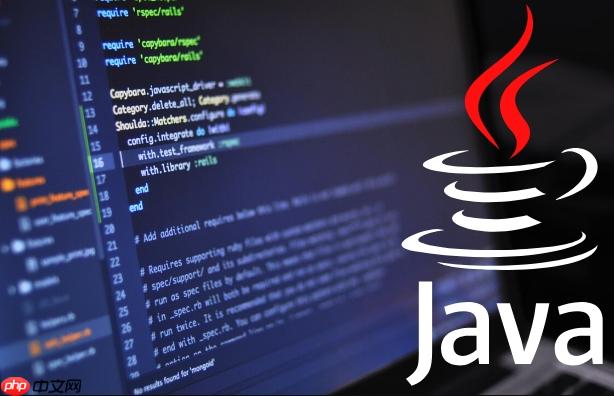java中实现异步编程的核心在于避免主线程阻塞,提高响应速度和吞吐量,主要通过completablefuture实现。1. completablefuture提供supplyasync()和runasync()创建异步任务,前者用于有返回值的任务,后者用于无返回值的任务;2. 异常处理可通过exceptionally()返回默认值或handle()统一处理结果与异常;3. 组合多个异步任务可使用thenapply()转换结果、thencompose()链式依赖任务、thencombine()合并两个独立任务的结果;4. 线程池选择上,默认使用forkjoinpool.commonpool()适合cpu密集型任务,i/o密集型或需控制并发时应自定义线程池并通过参数传入;5. 避免阻塞应避免调用get()方法,改用thenaccept()或thenapplyasync()将后续操作放入异步线程执行,确保非阻塞特性。

Java中实现异步编程,核心在于避免主线程阻塞,提高程序响应速度和吞吐量。CompletableFuture是Java 8引入的强大的异步编程工具,它提供了灵活的方式来处理异步任务的结果,组合多个异步操作,以及处理异常。

CompletableFuture的使用方法

CompletableFuture提供了多种静态方法来创建异步任务,例如supplyAsync()、runAsync()。supplyAsync()用于执行有返回值的任务,而runAsync()用于执行没有返回值的任务。
立即学习“Java免费学习笔记(深入)”;

// 执行一个有返回值的异步任务
CompletableFuture<String> future = CompletableFuture.supplyAsync(() -> {
// 模拟耗时操作
try {
Thread.sleep(1000);
} catch (InterruptedException e) {
Thread.currentThread().interrupt();
throw new RuntimeException(e);
}
return "Hello, Async!";
});
// 执行一个没有返回值的异步任务
CompletableFuture<Void> futureVoid = CompletableFuture.runAsync(() -> {
// 模拟耗时操作
try {
Thread.sleep(500);
} catch (InterruptedException e) {
Thread.currentThread().interrupt();
throw new RuntimeException(e);
}
System.out.println("Async task completed!");
});
// 获取异步任务的结果 (会阻塞直到结果可用)
try {
String result = future.get();
System.out.println(result);
} catch (Exception e) {
e.printStackTrace();
}关键在于,supplyAsync和runAsync默认使用ForkJoinPool.commonPool()线程池。如果需要自定义线程池,可以传入Executor参数。 这点需要注意,避免所有异步任务都挤在同一个公共线程池里。
如何处理异步任务的异常?
CompletableFuture提供了exceptionally()、handle()等方法来处理异常。exceptionally()允许你提供一个函数,在发生异常时返回一个默认值。handle()则允许你同时处理正常结果和异常情况。
CompletableFuture<String> futureWithException = CompletableFuture.supplyAsync(() -> {
// 模拟可能抛出异常的操作
if (Math.random() > 0.5) {
throw new RuntimeException("Something went wrong!");
}
return "Success!";
}).exceptionally(ex -> {
System.err.println("Exception occurred: " + ex.getMessage());
return "Default Value"; // 返回默认值
});
try {
String result = futureWithException.get();
System.out.println("Result: " + result);
} catch (Exception e) {
e.printStackTrace();
}handle方法更强大,它接收一个BiFunction<T, Throwable, U>,可以根据结果和异常进行更复杂的处理。 个人觉得,使用handle可以避免多层嵌套的try-catch,代码更简洁。
CompletableFuture如何组合多个异步任务?
CompletableFuture提供了thenApply()、thenCompose()、thenCombine()等方法来组合多个异步任务。thenApply()用于对异步任务的结果进行转换。thenCompose()用于将一个异步任务的结果传递给另一个异步任务。thenCombine()用于合并两个独立的异步任务的结果。
CompletableFuture<String> future1 = CompletableFuture.supplyAsync(() -> "Hello");
CompletableFuture<String> future2 = CompletableFuture.supplyAsync(() -> "World");
// 使用 thenCombine 合并两个 Future 的结果
CompletableFuture<String> combinedFuture = future1.thenCombine(future2, (s1, s2) -> s1 + ", " + s2);
// 使用 thenApply 对结果进行转换
CompletableFuture<String> transformedFuture = combinedFuture.thenApply(String::toUpperCase);
try {
String result = transformedFuture.get();
System.out.println(result); // 输出: HELLO, WORLD
} catch (Exception e) {
e.printStackTrace();
}thenCompose适用于一个任务的完成依赖于另一个任务的结果的场景。 例如,从数据库查询用户信息,然后根据用户信息查询订单信息。
CompletableFuture中的线程池选择有什么讲究?
选择合适的线程池至关重要。 默认的ForkJoinPool.commonPool()适用于CPU密集型任务,但如果你的任务是I/O密集型,或者需要控制并发度,那么自定义线程池是更好的选择。
// 创建一个固定大小的线程池
ExecutorService executor = Executors.newFixedThreadPool(10);
CompletableFuture<String> futureWithExecutor = CompletableFuture.supplyAsync(() -> {
// 模拟耗时操作
try {
Thread.sleep(1000);
} catch (InterruptedException e) {
Thread.currentThread().interrupt();
throw new RuntimeException(e);
}
return "Hello from custom executor!";
}, executor);
try {
String result = futureWithExecutor.get();
System.out.println(result);
} catch (Exception e) {
e.printStackTrace();
} finally {
executor.shutdown(); // 关闭线程池
}需要注意的是,使用自定义线程池后,一定要记得关闭线程池,释放资源。 否则,可能会导致程序无法正常退出。
如何避免CompletableFuture的阻塞?
虽然get()方法可以获取异步任务的结果,但它会阻塞当前线程。 为了避免阻塞,可以使用thenAccept()、thenApplyAsync()等方法。 thenAccept()在异步任务完成后执行一个Consumer,而thenApplyAsync()则在另一个异步任务中执行转换操作。
CompletableFuture<String> futureNonBlocking = CompletableFuture.supplyAsync(() -> {
// 模拟耗时操作
try {
Thread.sleep(1000);
} catch (InterruptedException e) {
Thread.currentThread().interrupt();
throw new RuntimeException(e);
}
return "Non-blocking result!";
});
// 使用 thenAccept 在异步任务完成后执行一个 Consumer
futureNonBlocking.thenAccept(result -> {
System.out.println("Result (non-blocking): " + result);
});
// 使用 thenApplyAsync 在另一个异步任务中执行转换操作
CompletableFuture<String> transformedFutureNonBlocking = futureNonBlocking.thenApplyAsync(String::toUpperCase);
transformedFutureNonBlocking.thenAccept(result -> {
System.out.println("Transformed result (non-blocking): " + result);
});
// 注意:这里不要调用 get(),否则就阻塞了避免阻塞的关键在于,不要使用get()方法,而是使用thenAccept、thenApplyAsync等方法,将后续操作也放到异步线程中执行。 这样才能真正实现非阻塞的异步编程。
以上就是Java中如何实现异步编程 掌握CompletableFuture的使用方法的详细内容,更多请关注php中文网其它相关文章!

每个人都需要一台速度更快、更稳定的 PC。随着时间的推移,垃圾文件、旧注册表数据和不必要的后台进程会占用资源并降低性能。幸运的是,许多工具可以让 Windows 保持平稳运行。

Copyright 2014-2025 https://www.php.cn/ All Rights Reserved | php.cn | 湘ICP备2023035733号